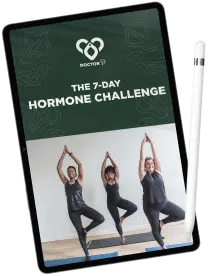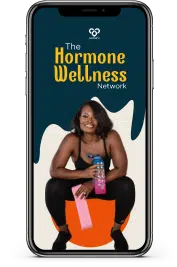SEXUAL HEALTH
Looking to see if that sexual information you found on TikTok is true? Here are 10 sexual myths debunked by me, Doctor P. Learn from a professional and get the correct information.
10 Sexual Myths DEBUNKED By Doctor P.
August 4th, 2025
It’s easy to get caught up in the half-truths and misconceptions about sex and sexual health that float around, especially since many of us spend a lot of time scrolling through TikTok, Instagram, YouTube, and we know how false information can spread on those platforms! Most of these sexual myths have been shared for centuries, so many of us women have actually started to believe them. But fear not, sis! I’m going to set the record straight. Let’s get to the bottom of these sexual myths together.
What is a Sexual Myth?
A sexual myth is basically a misconception or false belief about sex and sexuality. These myths can come from a variety of sources and might impact how we view our own bodies, relationships, and sexual experiences. They can also be confusing and harmful, so figuring out the truth is important. Ready to bust some myths and uncover the real deal?
10 Sexual Myths Women Have All Heard
Sexual myths can be everywhere, from social media to old-school stories passed down from our mamas. Some of these myths are so old that you have probably believed them for years, even if they’re far from the truth. Here are ten of the most common myths and what’s really going on.
Myth: “You can’t get pregnant if you’re on your period.”
Truth: Sis, this one’s a doozy! While it’s less likely, it’s still possible to get pregnant during your period. Sperm can hang out in your body for up to five days, and if you have a shorter cycle, it might just overlap with ovulation. Always use protection if you’re not planning to conceive.
Myth: “Size matters.”
Truth: Oh, the myths about size! The truth is, sexual satisfaction doesn’t depend on size. What does matter? Communication, intimacy, and technique. In fact, for many women, orgasm has less to do with penetration and more to do with our overall anatomy, particularly the distance between the vaginal opening and the clitoris, and how easily the clitoris is stimulated. It’s about connection, not measurements. When partners prioritize understanding, emotional safety, and learning what actually works, that’s when the magic happens.
Myth: “All women are supposed to have a G-spot orgasm.”
Truth: Not all women experience G-spot orgasms, and that’s okay! Every woman’s body is unique, and what works for one might not work for another. The key is to explore and find what feels best for you.
Myth: “A sexually transmitted infection (STI) is always obvious through symptoms.”
Truth: Many sexually transmitted infections (STIs) don’t always show symptoms, especially when they first start. This means you might have an STI like chlamydia, gonorrhea, or HPV without knowing it. Even if you don’t feel sick or notice any signs, you can still pass these infections to others, and they might cause serious health problems later if they are not treated. Getting regular pap smears and STI check-ups is essential, even if you’re feeling fine. It helps catch and treat infections early.
Myth: “Men always want sex, and women don’t.”
Truth: Sex drive varies for everyone, regardless of gender. There’s no one-size-fits-all rule for how often someone wants sex. It’s about finding a balance that works for both you and your partner. For men, it seems to be about 19x a day!
Myth: “A strong vaginal odor means something is wrong.”
Truth: It’s normal for the vagina to have a mild, natural scent, and this can change depending on things like your diet, menstrual cycle, and overall health. However, a strong or unpleasant odor could mean an infection or imbalance, but it doesn’t always mean something serious. Sometimes, changes in odor can be caused by things like hormonal changes or certain foods. If you’re worried about a strong odor or other symptoms like itching or unusual discharge, it’s a good idea to check in with your doctor.
Myth: “You can only get an STI from penetrative sex.”
Truth: STIs can be transmitted through various types of sexual contact, not just penetrative sex. This includes oral sex, anal sex, and genital-to-genital contact. Certain STIs, like herpes and HPV, can spread through skin-to-skin contact. It’s important to use protection and get regular STI screenings to protect your health, regardless of the type of sexual activity.
Myth: “You don’t need to pee after sex if you don’t feel like it.”
Truth: Peeing after sex is actually a good practice for maintaining urinary health. It helps flush out any bacteria that might have entered the urethra during intercourse, which can help prevent urinary tract infections (UTIs). Even if you don’t feel an urgent need to go, it’s a healthy habit to make sure to use the bathroom after sex. It’s a simple step that can contribute to better overall hygiene and comfort.
Myth: “You can’t get pregnant if you’re using birth control.”
Truth: While birth control is highly effective, no method is 100% foolproof, unless you’re celibate or have had permanent sterilization like a bilateral salpingectomy or vasectomy. It’s always good to be aware of how your chosen method works and use it correctly to maximize its effectiveness.
Myth: “You can’t get pregnant while breastfeeding.”
Truth: While breastfeeding can delay ovulation and menstruation, it is not a foolproof method of contraception. Women can still ovulate and become pregnant even if their periods have not resumed. If you’re not planning another pregnancy right away, it’s important to use additional contraceptive methods to ensure effective birth control.
There you have it, ladies, ten common sexual myths debunked! Remember to always fact-check what you hear or discuss it with your doctor at your next appointment.
The 7-Day Hormone Challenge
Instantly access actionable steps and data-driven strategies to conquer hormonal imbalance and gain quick wins day by day!
The Ultimate Hormone Assessment
Understand your hormonal imbalance type with our signature 48-question quiz, designed to uncover the root of your symptoms!
The Madame Estrogen Mastermind
Access a comprehensive solution to say goodbye to your hormonal imbalance!
The Hormone Wellness Network
Embody hormone harmony. Unleash your inner wonder woman — masterclasses, accountability, sisterhood, access to Doctor P, and more!




